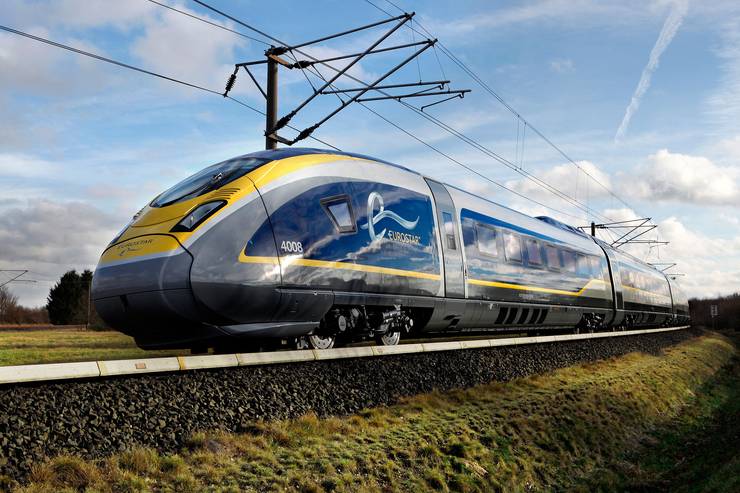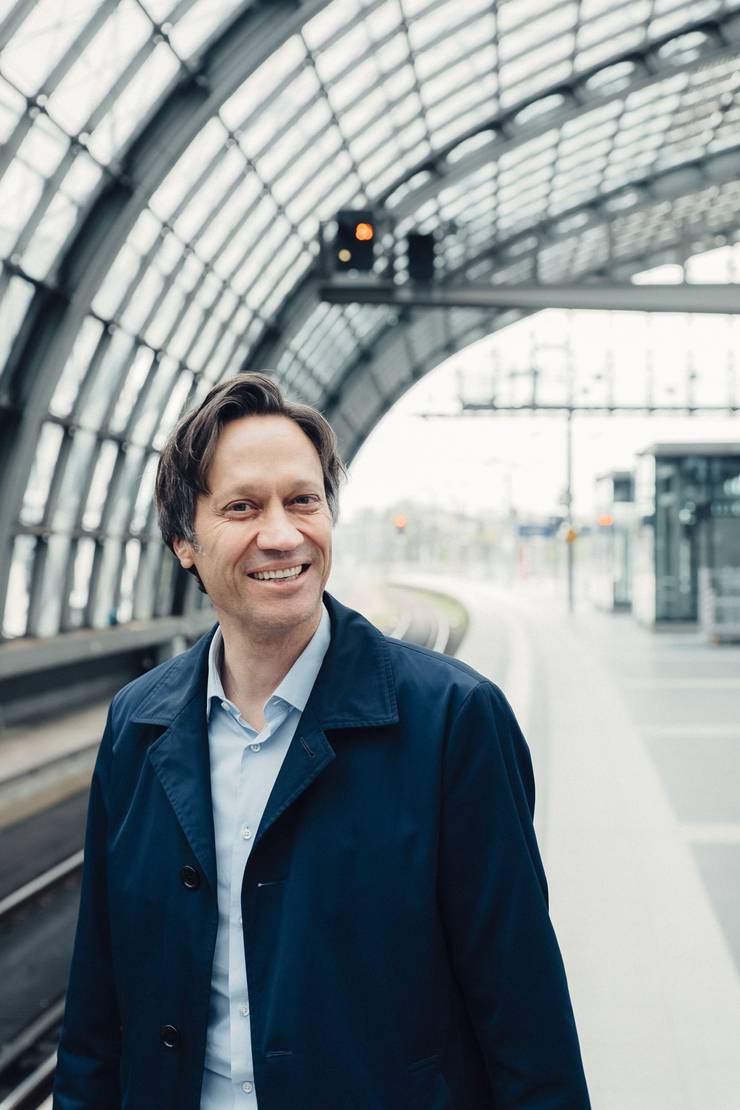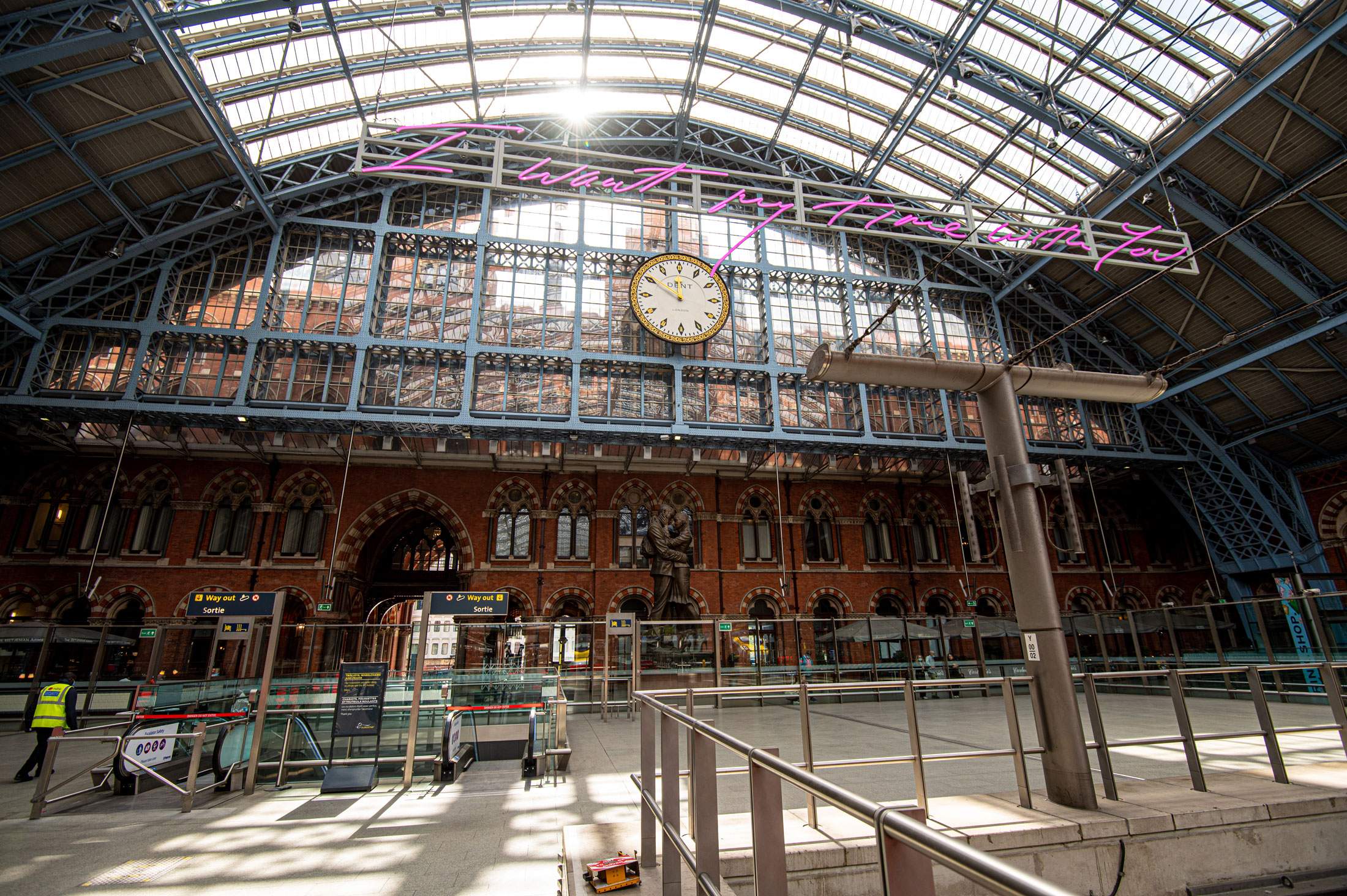Siemens Monocle
Transforming the everyday.
As passengers flock back to Eurostar trains after the pandemic, we lift the lid on the digital technology working behind the scenes that seamlessly supports their journeys.

Eurostar train, with its iconic blue and yellow colouring, zipping through the countryside
Anyone who has travelled on Eurostar’s iconic blue and yellow trains will attest to the ease of the experience of moving at high speed from one city centre to another. But what makes these Siemens Mobility E320 trains run smoothly and help Eurostar provide a reliable and high-quality service? The digital technology that underpins the trains and booking systems plays a huge role, according to Eurostar Group’s CEO, Jacques Damas. “Our customers want and expect a seamless experience,” says Damas. “So we’re using state-of-the-art technology developed by Siemens Mobility to make it easier and quicker to book our tickets, to provide up-to-the-minute journey information and to keep a check on the health of our trains. Having access to this technology, alongside the hard work and dedication of our amazing teams, helps us to ensure that people choose to travel with us again and again.”
The successful launch of a direct service between London and Amsterdam shows that there is an appetite for high-speed rail travel, which is also better for the environment. “Eurostar has really led the world and shown what high-speed rail can achieve in terms of passenger experience and fighting climate change,” says Michael Peter, Siemens Mobility’s CEO.

Siemens Mobility CEO Michael Peter
The digital systems used by Eurostar start doing their work before a passenger even leaves the house, from booking a ticket to on-board information and even keeping the trains themselves running. “Rail tickets have been sold in much the same way for years,” says Peter. “Sales might have moved online but the model is the same: a certain number of seats sold at predetermined prices.”
In contrast, the airline industry has been using software that matches people to seats at the best prices so that passengers get the best deals and the operator has a full aircraft. This is what the industry calls dynamic pricing and seat allocation.
“Sqills, a public-transport software-technology company that we acquired last year, saw an opportunity and developed off-the-shelf rail and bus inventory, reservation and ticketing software that operators can use to provide this dynamic pricing and seat allocation for train travel,” says Peter.
And for Eurostar, this software links directly to the computerised networks that travel companies use to sell and allocate seats in real time. Eurostar’s tickets can therefore be positioned alongside aeroplane tickets to make it even easier for people to choose.
“An empty seat is all cost and no revenue for us,” says Damas. “So having a ticket-booking system that responds to demand helps us match more passengers to trains at the right price, which is the classic win-win for us as a business and for our customers.”
“Having a ticket- booking system that responds to demand helps us match more passengers to trains at the right price”
Once on board, more digital systems begin working in the background. Screens linked by a train-wide communications network keep passengers up to date with information on the journey and the route. Meanwhile, the train’s smart digital systems are monitoring the trains, collecting and reporting data that helps Eurostar keep the journey smooth and efficient.
“This kind of system offers many opportunities to make progress in both the immediate and distant future,” says Damas. “First of all, it allows us to anticipate and rectify technical faults before they have any operational effect. In the longer term, in close collaboration with Siemens Mobility, we can improve the standard maintenance regime and the design of certain components.”
Such “smart monitoring” is also used by Siemens Mobility to keep its trains running perfectly in places such as London and Köln via a digital platform called Railigent. Its digital signalling helps the high-speed trains navigate the Belgian countryside. This means that train drivers no longer have to rely on traffic-light signals by the trackside. Instead, digital systems directly communicate with the train’s on-board system to tell the driver when to speed up, slow down or stop.

London’s St Pancras station, where Eurostar departs
The benefits are not only in terms of improved safety. “The trains can be driven much more efficiently, reducing the amount of energy they use and cutting wear and tear on the tracks, wheels, brakes and so on. All of which lowers the cost of operating and maintaining the trains,” says Peter.
The future of rail is digital monitoring to collect data from the rolling stock and software that uses it to provide more and better information for operators and passengers alike.
“We recently launched Siemens Xcelerator, an open digital business platform,” says Peter. “We and our industry partners – even our competitors – can now collaborate and share data. That means that we’ll be able to combine what the train is telling us with the data we’re getting from signalling and station systems to give operators up-to-the-minute information about how the network is functioning and enable passengers to choose the best journeys and tickets.”
With governments and corporate entities across the world focused on cutting carbon emissions, and people wanting to make greener choices, what can we learn from the Eurostar experience?
“It’s shown that, given the choice, people will choose to travel by train rather than fly,” says Peter. “We’re now seeing governments and investors across the world, from Egypt to the US, investing in state-of-the-art digital trains, infrastructure and software, just like Eurostar has.”
Find the full series at monocle.com/content/siemens

